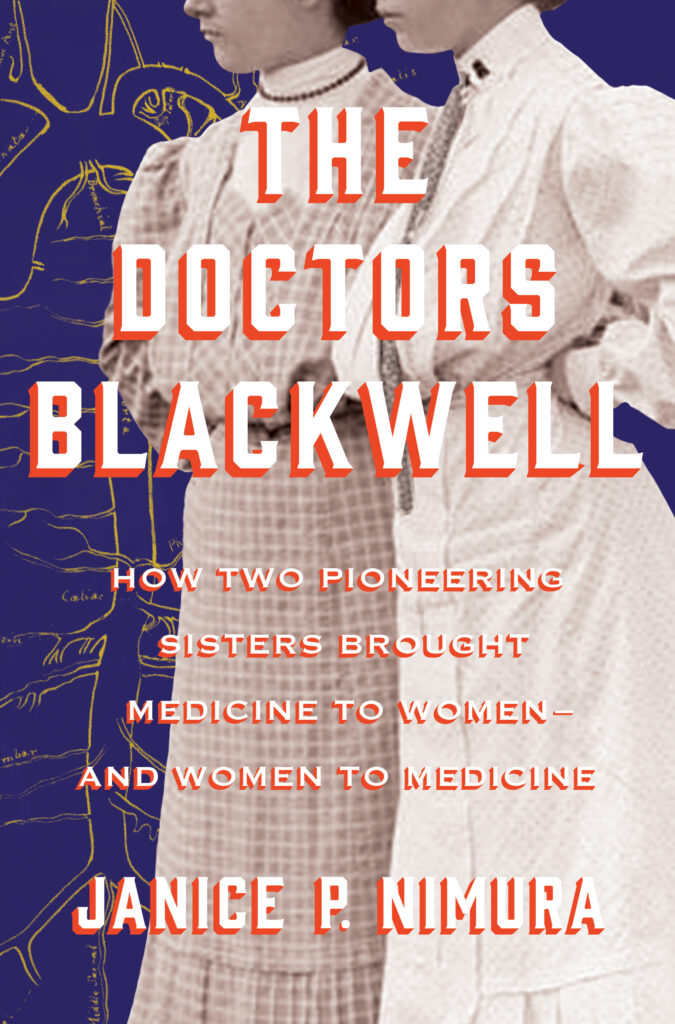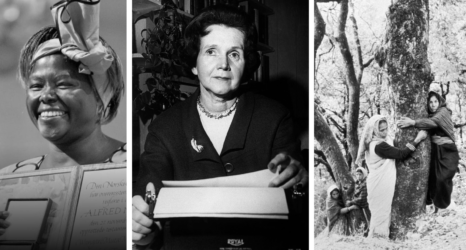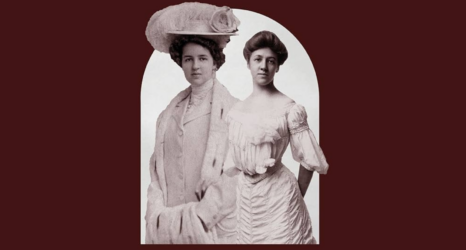Elizabeth Blackwell was the first woman in America to receive a medical degree, in 1849. She had never wanted to be a man—she wanted, as a woman, to enjoy the same level of respect and freedom men took for granted.

The following is an excerpt from Chapter 2: “Betweenity” of Janice P. Nimura’s The Doctors Blackwell:
The world knows Elizabeth Blackwell as the first woman in America to receive a medical degree, in 1849. Her sister Emily joined her in that distinction in 1854. Their achievements, including the foundation of the first hospital run by and for women, are enshrined in American history.
But in 1845, before Elizabeth became an icon, she was a bored and frustrated 24-year-old, teaching to help support her mother and eight siblings in Cincinnati. It was at this stalled moment that a terminally ill friend planted the seed of an idea.
“If I could have been treated by a lady doctor,” the woman confided, “my worst sufferings would have been spared me.”

Elizabeth scoffed. Why would a young woman enthralled by literature and philosophy suddenly apply her considerable ambition to what was, essentially, still a trade—and not even a lucrative one? Not to mention there was no such thing as a female physician, at least in any honorable sense. Women who claimed that title were peddlers of patent elixirs—or worse, of abortion. Even respectable male doctors, armed with little more than purgatives, laudanum, and lancets, often did more harm than good—she had seen this at her own father’s deathbed.
On top of this, with the explosion of industrial cities and the epidemics that accompany overcrowding, the general state of human health had rarely been worse. Confidence in the ability of doctors to preserve life had never been lower.
Since childhood, Elizabeth had always hidden signs of illness from her family: Sickness was for the weak.
“My favourite studies were history and metaphysics,” she wrote, “and the very thought of dwelling on the physical structure of the body and its various ailments filled me with disgust.”
But her metaphysical orientation eventually directed her toward the science of the body. That winter, Margaret Fuller—editor of the Transcendentalist magazine The Dial—published Woman in the Nineteenth Century, a bestseller that spoke directly to Elizabeth’s unsatisfied mind. Humanity would achieve a moral awakening, Fuller insisted, only when women enjoyed the same independence as men—a step that women must claim for themselves.
“If you ask me what offices they may fill; I reply—any,” wrote Fuller. “I do not care what case you put; let them be sea-captains, if you will.”
Could it be that “doctor” was the office Elizabeth was meant to fill?
She was not drawn to the daily work of doctoring—that would involve uncomfortably intimate contact with individual sufferers—but becoming a doctor as qualified as any man was a noble ideological quest. Elizabeth’s attraction to this challenge wrestled with her distaste for human biology and won. There was, moreover, the added incentive of the recognition that such an extraordinary accomplishment might bring. She had no use for most social interaction, but she had no objection to fame.
Elizabeth visited doctors in Cincinnati and wrote to others in New York, receiving everywhere the same reaction: a female medical student was an interesting idea, but what self-respecting woman would expose herself to the naked realities of the body in the company of men? And then there was the unmentionable question of such a woman’s own body, incapacitated monthly. Bedrest was a common prescription for menstrual complaints, and what would a lady doctor’s patients do then?
Even Elizabeth’s friend Harriet Beecher Stowe was dubious. Certainly a woman doctor would be “highly useful,” she conceded, but the forces ranged against Elizabeth, which she must “either crush or be crushed by,” were formidable.
Of course, women had always served as healers—whether revered as angels at the bedside, or reviled (though still, quietly, consulted) as uncomfortably powerful initiates into the secrets of witchcraft. But as eighteenth-century Enlightenment ideas introduced empirical science and new techniques into the healing arts—like the use of forceps during delivery—female practitioners were replaced by male professionals. As the establishment of medical schools and societies created new frameworks of legitimacy, women were pushed further toward the margins. However: in the last few decades, as medical schools began to proliferate in the United States, it was perhaps easier to argue for a woman’s right to be a doctor. If she attended the same lectures and passed the same examinations as a man, who could deny her qualifications?
There remained only the daunting fact that no woman had ever gained admittance. As someone who scorned the easy path, however, this apparently insurmountable obstacle only hardened Elizabeth’s resolve.
“The idea of winning a doctor’s degree gradually assumed the aspect of a great moral struggle,” she wrote, “and the moral fight possessed immense attraction for me.”
The reactions of the medical establishment ranged from hilarity to horror. What if female doctors were a resounding success, and female patients preferred them? Even those rare men who approved of Elizabeth’s goal balked at the notion of a woman studying anatomy alongside them. Her only way forward, they told her, was to pose as a man—perhaps in Paris, where the excellent medical instruction was free, and attitudes less puritanical.
But to Elizabeth, achieving a diploma in disguise missed the point. Her crusade, she wrote, “must be pursued in the light of day, and with public sanction, in order to accomplish its end.” If she was to be a beacon, she could not hide herself. She had never wanted to be a man—she wanted, as a woman, to enjoy the same level of respect and freedom men took for granted.
Margaret Fuller would have approved. When Elizabeth and Emily Blackwell died within months of each other in 1910, there were more than nine thousand women doctors in America. Today, 35 percent of all physicians—and slightly more than half of all medical students—are female.
Excerpted from The Doctors Blackwell: How Two Pioneering Sisters Brought Medicine to Women and Women to Medicine by Janice P. Nimura. Copyright (c) 2021 by Janice P. Nimura. Used with permission of the publisher, W. W. Norton & Company, Inc.
You may also like:





